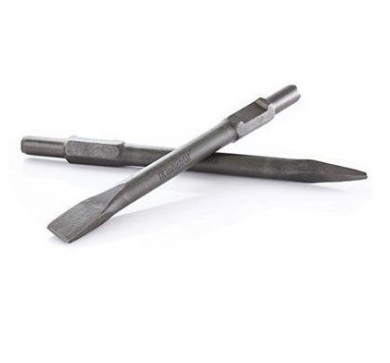Our Location
304 North Cardinal St.
Dorchester Center, MA 02124

When a hammer drill bit becomes stuck and refuses to detach, it can be a frustrating and time-consuming issue, especially if you are in the middle of a project. This comprehensive guide will walk you through the steps to safely and effectively remove a stuck hammer drill bit, covering various brands and models, and providing detailed explanations for each method.
Before attempting to remove a stuck hammer drill bit, it is essential to understand why the bit may have become lodged in the first place. Common reasons include:
Before you begin, gather the following tools and materials to assist in the removal process:
Before attempting to remove the bit, ensure that the hammer drill is turned off and unplugged from the power source. This is crucial for your safety to prevent accidental activation of the drill during the removal process.
Examine the chuck and the bit to identify any visible signs of damage, corrosion, or debris buildup. If the chuck appears damaged or worn, it may need to be replaced after the bit is removed.
If corrosion or rust is suspected, apply a generous amount of penetrating oil, such as WD-40, to the area where the bit meets the chuck. Allow the oil to penetrate for several minutes to help dissolve any rust or corrosion that may be binding the bit.
Grip the base of the bit firmly with an adjustable wrench or pliers. If the chuck is keyless, you may be able to grip the chuck itself to provide additional leverage. Turn the bit counterclockwise to attempt to loosen it. If the bit is still stuck, proceed to the next step.
Gently tap the end of the bit with a rubber mallet to help loosen it. The vibrations from the tapping can help break any corrosion or debris that may be holding the bit in place. Be careful not to strike the bit too hard, as this could damage the bit or the drill.
If the bit is still stuck, applying heat can help expand the metal components and break the corrosion bond. Use a heat gun or hairdryer to apply heat to the chuck and the base of the bit for several minutes. Be cautious not to overheat the drill, as this could damage internal components. After heating, attempt to loosen the bit again using the wrench or pliers.
If the bit is still refusing to budge, you can use vice grips to provide additional leverage. Clamp the vice grips onto the base of the bit and turn counterclockwise to attempt to loosen it. The added grip and leverage provided by the vice grips can often help dislodge a stubborn bit.
If you have exhausted all of the above methods and the bit is still stuck, it may be time to seek professional assistance. A qualified technician will have the tools and expertise to safely remove the bit without causing further damage to the drill.

Understanding the type of chuck your hammer drill has can be helpful when attempting to remove a stuck bit. Here are some common brands and models of hammer drills, along with their chuck types:
DeWalt offers a range of hammer drills, including the DeWalt DCD996P2 20V MAX XR Brushless 3-Speed Hammer Drill. This model features a keyless chuck, which allows for quick and easy bit changes. However, keyless chucks can sometimes be prone to bits becoming stuck if over-tightened.
Milwaukee is another popular brand known for its durable and powerful hammer drills. The Milwaukee 2804-20 M18 FUEL 1/2″ Hammer Drill is a high-performance model that features a keyless chuck. Like the DeWalt model, the keyless chuck on the Milwaukee drill can be convenient but may require extra care to prevent bits from becoming stuck.
Bosch offers a variety of hammer drills, including the Bosch GBH2-28L 1-1/8″ SDS-plus Bulldog Xtreme Max Rotary Hammer. This model features an SDS-plus chuck, which is designed specifically for use with SDS-plus bits. SDS chucks provide a secure hold on the bit and are less likely to allow bits to become stuck compared to keyless chucks. However, if a bit does become stuck in an SDS chuck, special techniques may be required to remove it.
Makita is known for its high-quality power tools, including hammer drills. The Makita XPH12Z 18V LXT Lithium-Ion Brushless Cordless 1/2″ Hammer Driver-Drill features a keyless chuck for easy bit changes. As with other keyless chuck models, care should be taken to avoid over-tightening the bit to prevent it from becoming stuck.
Hilti is a premium brand that offers professional-grade hammer drills. The Hilti TE 6-A36 36V Cordless Rotary Hammer Drill features an SDS-max chuck, which is designed for use with larger SDS-max bits. SDS-max chucks provide a secure hold on the bit and are less likely to allow bits to become stuck. However, if a bit does become stuck, special tools and techniques may be required to remove it.
To minimize the risk of bits becoming stuck in your hammer drill, follow these preventive tips:
Removing a stuck hammer drill bit can be a challenging task, but with the right tools, techniques, and patience, it is often possible to dislodge the bit without causing damage to the drill. By understanding the common reasons why bits become stuck, gathering the necessary tools and materials, and following the step-by-step guide outlined in this article, you can safely and effectively remove a stuck bit from your hammer drill. Additionally, by following the preventive tips provided, you can minimize the risk of bits becoming stuck in the future, ensuring that your hammer drill remains in good working condition for years to come.